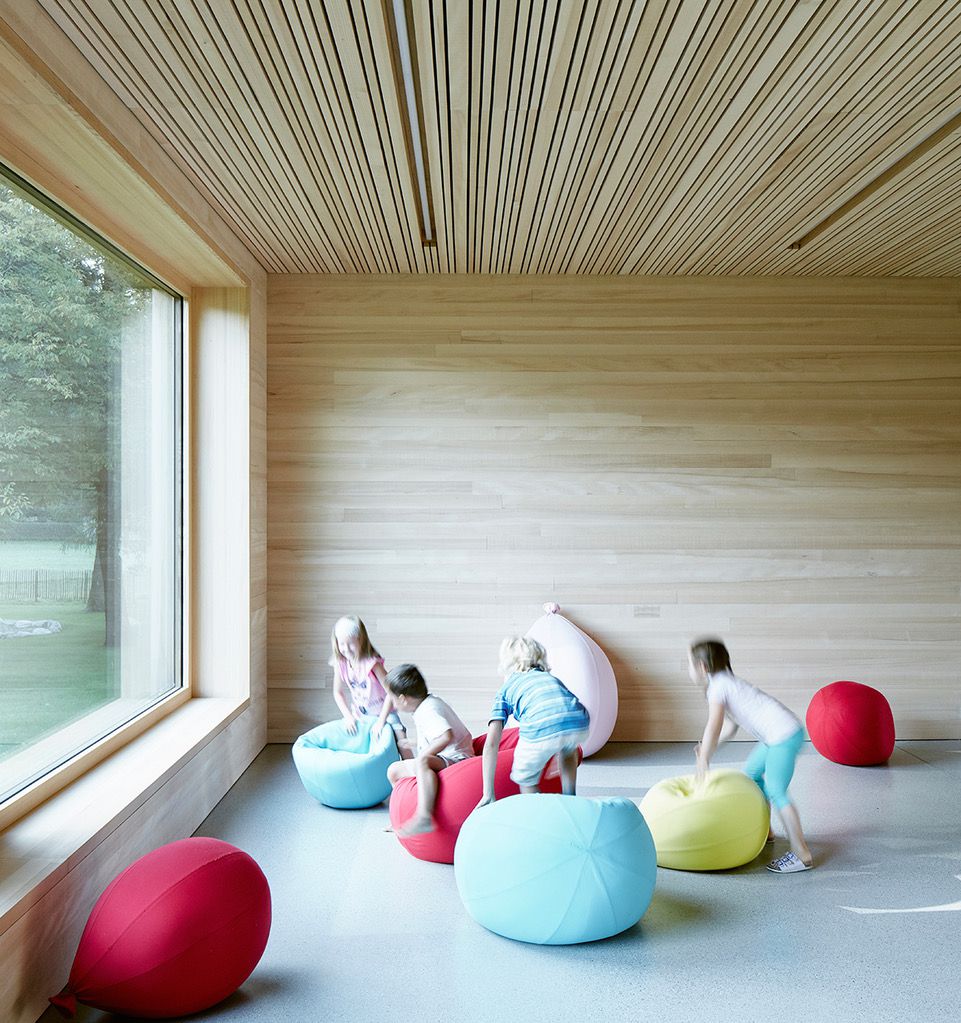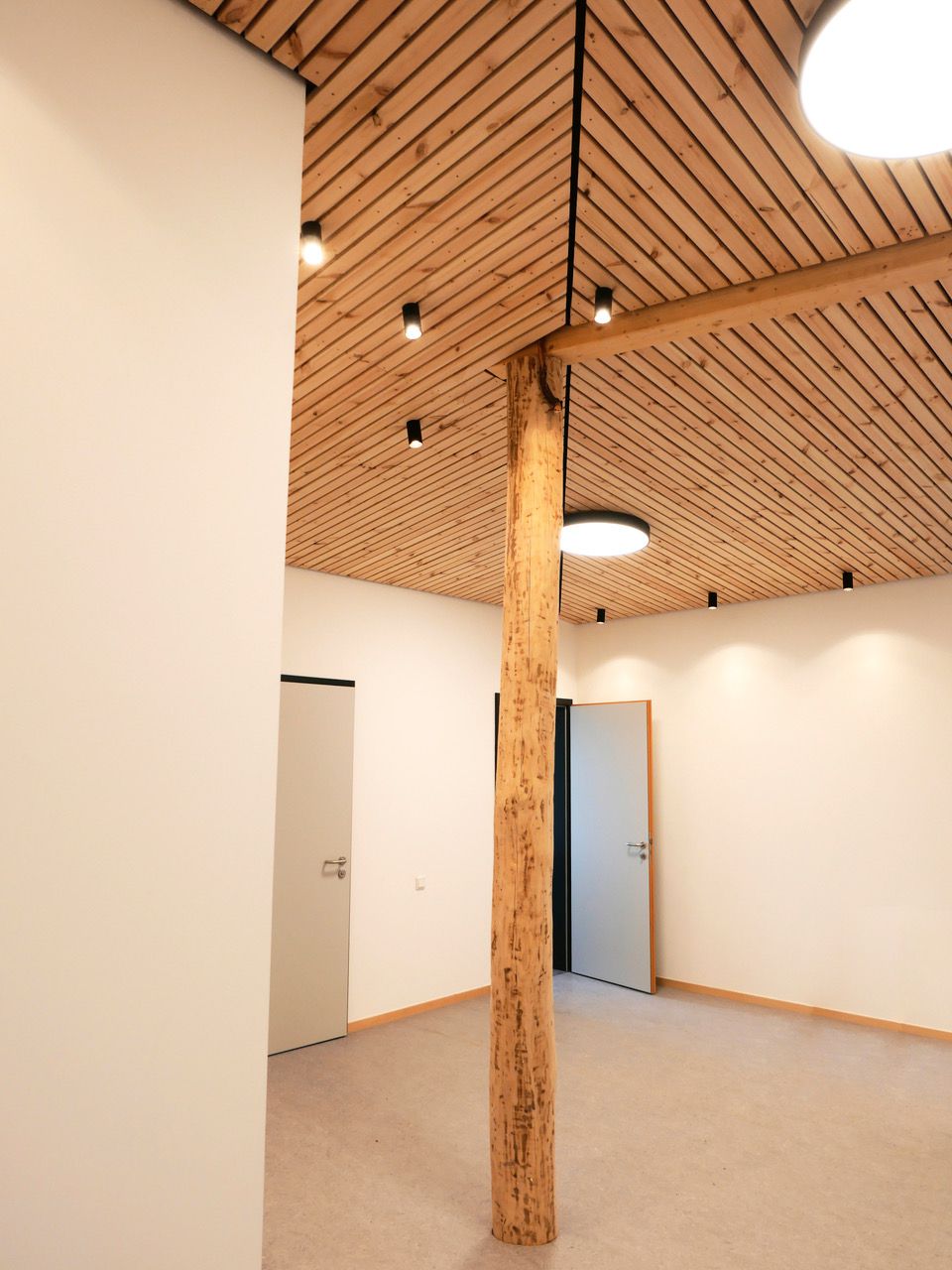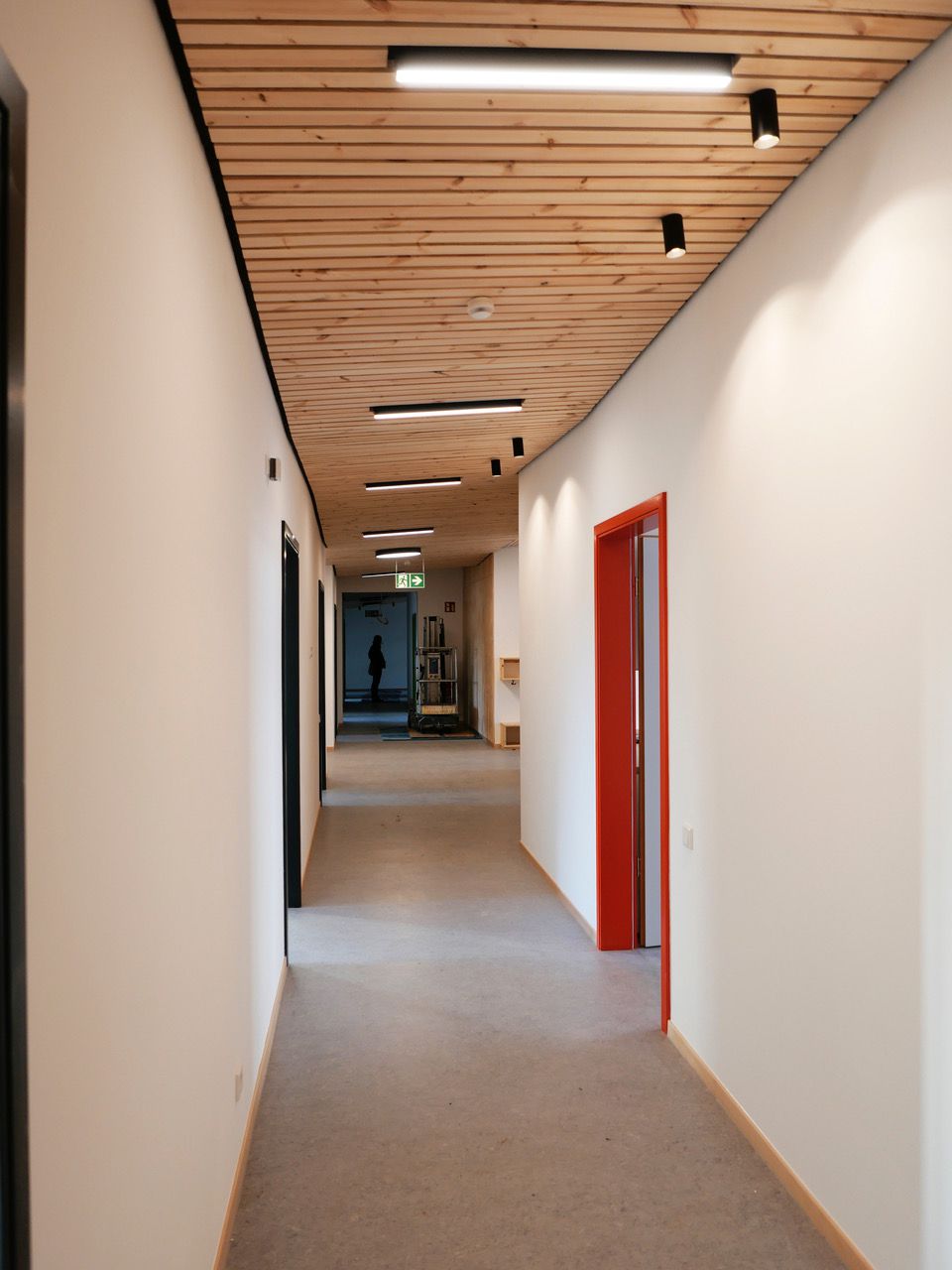Kindergarten in Schwelm
Lighting project for a WELL-certified kindergarten
Situada en la ciudad de Schwelm (Alemania), el jardín de infancia se ha diseñado íntegramente por parte del equipo de arquitectura "Wilde + Wehnau" pensando en la reducción de la huella de carbono durante el proceso de diseño, construcción y uso.
Diferentes factores influyen en una construcción para obtener certificados WELL, ventilación correcta, calidad de aire y agua, ergonomía de mobiliario y materiales, confort térmico y acústico, políticas de conciliación familiar, contacto con la naturaleza, eficiencia energética y como no, una correcta iluminación.
We will comment on the first points in passing, although it is not the subject to be dealt with, it is worth mentioning them, at least those visible in the images. Wood can be seen in all the installations as a constructive element, a good insulator, very necessary given the location of the work, which also arranged in slats as in the case of the ceiling, works as an acoustic insulator. In the case of the windows, of large dimensions, they contribute to illuminate the rooms in a natural way while preventing heat loss thanks to the double glazing that acts as a thermal barrier.
La iluminación del jardín de infancia, a cargo de ONOK Lighting, representa uno de los puntos relevantes. Los diferentes factores de esta a tener en cuenta cuando hablamos de una correcta iluminación, que cumpla con las normativas para edificaciones de este estilo, son:
UGR index
A correct level of glare to avoid eyestrain or visual fatigue, this is achieved thanks to luminaire factors such as microprismatic diffusers, recessed points of light in the luminaire, linear lighting that distributes the luminous flux, various points of light distribution, and a wide variety of lighting points.
light per room and also to environmental factors, such as the presence of large windows and matte or low-gloss walls.In this particular case 2 types of luminaires are installed DRONE y LINER both can achieve a UGR level below 1
Color rendering index CRI
This factor depends entirely on the LED device and the ability of the light it emits to faithfully reproduce the colors in objects, being in this case high values, CRI >95 in both luminaires, very necessary for the type of construction,
un jardín de infancia.
Energy efficiency
Sin duda un valor importantísimo, sobre todo para los meses de invierno en los que, por la geografía de la guardería, serán muchos los días que se necesite iluminación artificial. La eficiencia LED del Drone está casi en los 180 lm/W y en el caso del LINE R entre 170 y 180 lm/W dependiendo de la temperatura de color, unas cifras que sin duda reducirá el coste energético debidos a la iluminación
Life cycle of the luminaire
Último pero no menos importante. Como hemos mencionado al principio, se planteó una construcción con cero emisiones de dióxido de carbono, y por tanto la procedencia de los materiales y su posterior procesado, una vez terminado su vida útil, adquiere especial relevancia. En este aspecto los distintos materiales que componen las luminarias son en su mayor medida de origen reciclado, como es el caso del aluminio, hasta un 70% reciclado y por supuesto papel y cartón reciclado para los embalajes y documentación para su envío. Nuestros diseños con componentes eléctricos y electrónicos del producto alargan la vida útil de la luminaria, ofrecemos garantía extensible a 5 años, y una vez termina aseguramos que su impacto en el medio ambiente se atenúa.




